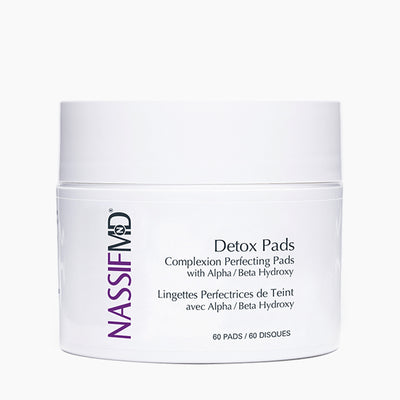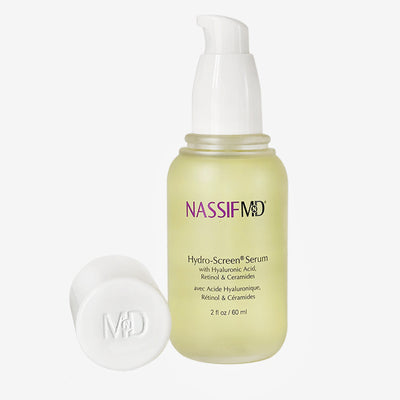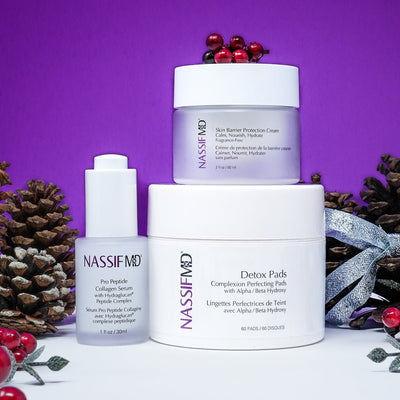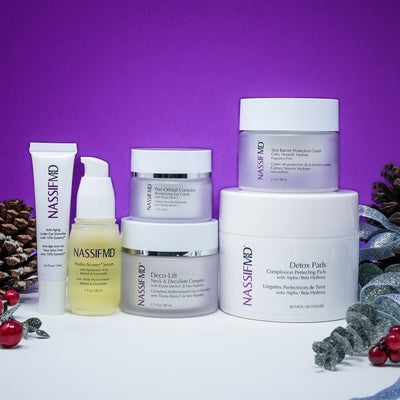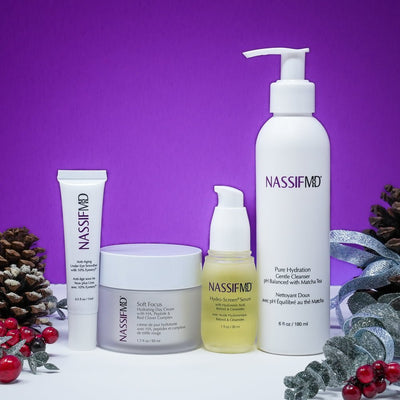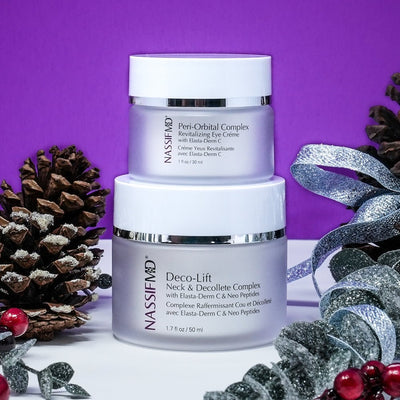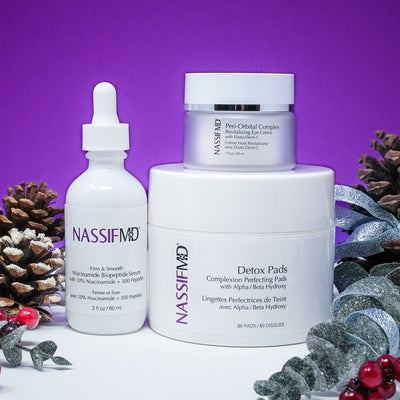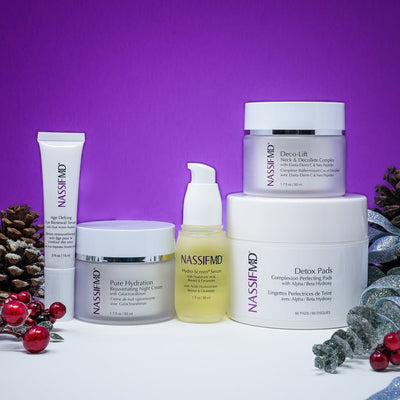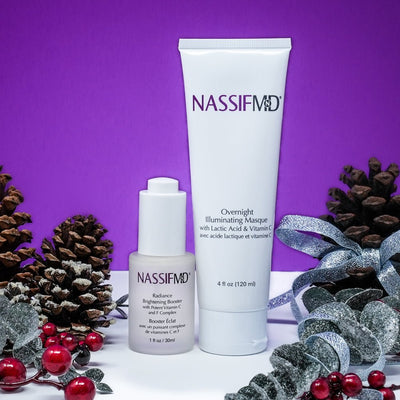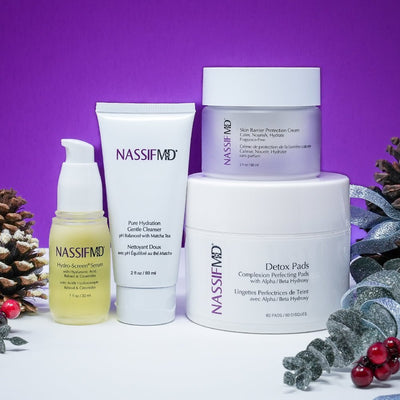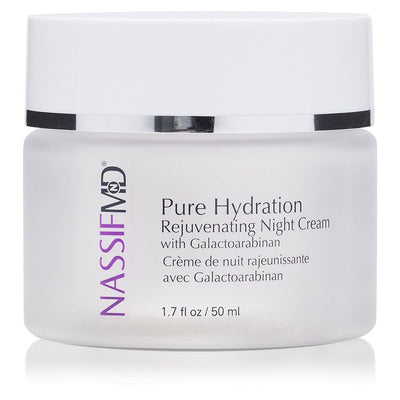A Facial Plastic Surgeon Explains How To Hydrate Your Skin For A Youthful, Healthy Appearance
Your skin provides a barrier between your body and the rest of the world, protecting you from pollution, pathogens, and UV rays. Your face, neck, and hands shield you from the majority of environmental exposures and often get the brunt of damage.
It’s easy to take your skin for granted until you notice fine lines, decreased elasticity, dryness, and other signs of skin aging. Then, healthy skin quickly becomes a top priority, and you are on a mission to find the best anti-aging cream.
With so much information about how to care for your skin, it can be overwhelming. Today’s article will break it down and discuss the importance of hydration for healthy skin, including several must-have ingredients in your serum to maintain healthy, plump, and elastic skin.
Keep reading to learn more about:
- Hydrating vs. moisturizing
- What does retinol do?
- Hyaluronic acid and how to get rid of fine lines
- Skin elasticity
- What are ceramides?
- Free radical protection
- The NassifMD® Hydro-Screen® Hydrating Serum solution
Let’s get started!
Moisturize and Hydrate Face and Skin
Water is essential for life and necessary for healthy skin. Skin hydration refers to the water inside skin cells. When they full properly hydrated, skin cells appear plump, full and can function optimally.
When the skin is dehydrated however, it may appear dull and uneven, with more pronounced fine lines and surface wrinkles.
While skin hydration is a reflection of internal body hydration, there can also be changes to skin hydration because of water exchange on the skin’s surface. Without a strong skin barrier, you can lose water through the skin.
When it comes to skin products, it’s easy to think that a simple moisturizer is enough to hydrate the skin. Actually, face moisturizer traps and seals the moisture that’s already in your skin. It doesn’t necessarily add more water to the skin cells, which is what some serums help facilitate. Not all serums are created equally however. This is important because it’s what determines quality and efficacy.
Certain ingredients in serums and other skincare products promote skin hydration. These include:
- Retinol
- Hyaluronic acid
- Ceramides
Retinol Serum – What Does Retinol Do?
Retinol is a biologically active form of vitamin A. Vitamin A is an essential nutrient we must obtain from the diet, necessary for growth, vision, immunity, genetic expression, and skin health.
Retinol is the category of retinoids, which also includes retinoic aldehyde and retinoic acid; retinoids are naturally occurring and also derived synthetically for a host of skin-related applications.
You may be familiar with retinol as a component of topical prescription medications used for acne, psoriasis, and other skin conditions. However, retinol is also available over the counter at lower doses to promote healthy skin. In fact, retinol is the first FDA-approved anti-wrinkle agent.
The topical application of retinol serum has many benefits, including:
- Antioxidant protection. Retinol acts as an antioxidant, protecting skin cells against free radical damage (more on this below).
- Maintaining the epidermis. Retinol helps maintain the epidermis, or outer layer of the skin, by regulating cell turnover.
- Reduction of wrinkles. Topical application reduces wrinkles and other signs of aging.
- Hyaluronic acid accumulation. Retinol helps maintain skin hydration by supporting the collection of hyaluronic acid in the epidermis.
- Inhibiting water loss. Retinol helps prevent the loss of water through the epidermis.
- Prevent collagen Collagen, the main structural protein in the skin, decreases with age. Retinol helps to slow the breakdown.
Fine Lines and Wrinkles
Aging affects the whole body, but the skin is our most visible organ telling us how well we’re doing at facilitating the aging process. Fine lines and wrinkles are some of the first signs of skin aging, along with a loss of hydration and elasticity.
When you notice fine lines under the eyes, it’s a clue to focus on skin hydration.
Causes of Fine Lines and Wrinkles
Fine lines and wrinkles may be due to several related factors, including:
- The natural aging processes
- Dehydration
- Nutrient deficiencies affecting the skin (protein, essential fats, vitamin A, vitamin C, zinc, and others)
- Free radical damage from pollution and UV radiation
- Loss of collagen and slower collagen production with age
- Decreased hyaluronic acid production
How to Get Rid of Fine Lines and Wrinkles
Using a hyaluronic acid serum is one of the fastest ways to get hydrated skin and improve the appearance of fine lines.
Hyaluronic acid is a natural component of the extracellular matrix, the fluid between cells. The skin, brain, connective tissues, and joints are all parts of the body where you’ll find hyaluronic acid.
As a topical application, hyaluronic acid penetrates the skin and helps draw water into the skin, supporting hydration (this is why you apply hyaluronic acid serums when the face is damp or moist after cleansing and toning).
In addition to improving skin hydration, hyaluronic acid:
- Promotes wound healing
- Promotes skin regeneration
- Decreases inflammation (it’s anti-inflammatory)
Hyaluronic acid is an efficient and safe ingredient in skincare formulas, and it works in synergy with other ingredients, helping them penetrate the skin. For this reason, hyaluronic acid also has many medical applications delivering nutrients and pharmaceuticals through the skin.
Improve Skin Elasticity
Poor skin elasticity is a sign of aging skin that goes together with dehydration. Elasticity is the skin’s ability to stretch and bounce back into shape.
Collagen and elastin are essential proteins in the skin (and throughout the body) that give the skin its shape and allow for flexibility. These proteins also help the skin hold onto water. Over time, collagen and elastin levels decline, contributing to skin dehydration and loss of elasticity. Skin that doesn’t bounce back fully may look crinkled and wrinkled.
Luckily, many of the same factors that improve hydration also improve skin elasticity, including retinol and hyaluronic acid. Topical retinol improves elasticity and skin thickness, while hyaluronic acid stimulates collagen and elastin production.
What Are Ceramides? Benefits of Ceramide Serum
The skin naturally produces ceramides, and like collagen, elastin, and hyaluronic acid, they naturally decline with age.
Ceramides are lipid molecules that help give skin its structure and allows for a well-functioning skin barrier. In addition, ceramides protect the skin from free radical damage and help regulate the health of skin cells. Using ceramides for skin conditions is another common application, as they help improve atopic dermatitis and related skin concerns.
Ceramides play a significant role in preventing water loss from the skin, helping the skin to retain moisture. Including a ceramide serum or ceramide moisturizer in your skincare routine is another way to reduce fine lines and wrinkles, to promote plump, hydrated skin.
Anti-Aging Vs. Free Radical Damage of the Skin
Free radicals are unstable molecules produced by cellular metabolism, UV radiation, and, increasingly, by exposure to environmental toxins. In the skin, free radicals damage cells and break down the skin barrier, leading to signs of aging, including loss of hydration, elasticity, and a youthful complexion.
Antioxidants combat free radical damage, and high antioxidants in the skin are an essential component of anti-aging skincare. Antioxidants include:
- Vitamins - vitamin A (retinol), vitamin E, vitamin C
- Minerals (zinc, selenium)
- Plant compounds such as polyphenols
Antioxidants eaten through the diet can end up in the skin, while higher concentrations can be applied directly through serums and skin care products to fight free radicals in skin.
Synergistic Hydrating Skincare
We’ve discussed the benefits of retinol, hyaluronic acid, and ceramides individually for their hydrating and skin-protecting benefits. However, when used together, these ingredients offer more than the sum of their parts.
With a deep understanding of how the skin works, NassifMD® Skincare formulas intentionally formulated in the proper ratios to harness the synergistic benefits of these powerhouse ingredients. You’ll need fewer products, which is more affordable and offers more significant benefits than single-ingredient products.
NassifMD® Hydro-Screen® Hydrating Serum can be used on the face, neck, and hands to hydrate, nourish, and protect delicate skin. The synergy of ingredients includes:
- Hyaluronic Filling Spheres – a concentrated form of hyaluronic acid that pulls moisture into the skin
- Ceramide NP – a natural ceramide
- Retinol Molecular Film Fluid – a combination of retinol and vitamin E
- Sytenol A – a powerful, natural antioxidant from the babchi plant, that acts as a gentle retinol
- Lipochroman – a vitamin E- like molecule that is a powerful antioxidant
With this combination of active ingredients, NassifMD® Hydro-Screen® Hydrating Serum supports:
- Intense hydration and moisturization
- Improvement of fine lines and wrinkles
- Improved firmness, elasticity, and volume
- Skin renewal and rejuvenation
- Strong protective barrier
- Increased collagen production
- Even skin tone
- Antioxidant protection from free radical damage
- Greater skin health
NassifMD® Hydro-Screen® Hydration Serum is an ultra-versatile hybrid serum and moisturizer. Apply it as a traditional serum after cleansing and toning and prior to your moisturizer; or apply as the last step in your routine before sunscreen or makeup. We recommend 2 to 3 drops twice daily, morning and evening, for optimal anti-aging benefits.
It’s incredible how, with the right formula, skincare becomes less of a guessing game and more of a seamless way to maintain youthful, healthy skin.
References
- Zasada, M., & Budzisz, E. (2019). Retinoids: active molecules influencing skin structure formation in cosmetic and dermatological treatments.Postepy dermatologii i alergologii, 36(4), 392–397.
- Linus Pauling Institute Micronutrient Information Center. Vitamin A. Accessed January 30, 2023.
- Puścion-Jakubik, A., Markiewicz-Żukowska, R., Naliwajko, S. K., Gromkowska-Kępka, K. J., Moskwa, J., Grabia, M., Mielech, A., Bielecka, J., Karpińska, E., Mielcarek, K., Nowakowski, P., & Socha, K. (2021). Intake of Antioxidant Vitamins and Minerals in Relation to Body Composition, Skin Hydration and Lubrication in Young Women.Antioxidants (Basel, Switzerland), 10(7), 1110.
- Juncan, A. M., Moisă, D. G., Santini, A., Morgovan, C., Rus, L. L., Vonica-Țincu, A. L., & Loghin, F. (2021). Advantages of Hyaluronic Acid and Its Combination with Other Bioactive Ingredients in Cosmeceuticals.Molecules (Basel, Switzerland), 26(15), 4429.
- Seité, S., Bredoux, C., Compan, D., Zucchi, H., Lombard, D., Medaisko, C., & Fourtanier, A. (2005). Histological evaluation of a topically applied retinol-vitamin C combination.Skin pharmacology and physiology, 18(2), 81–87.
- Bukhari, S. N. A., Roswandi, N. L., Waqas, M., Habib, H., Hussain, F., Khan, S., Sohail, M., Ramli, N. A., Thu, H. E., & Hussain, Z. (2018). Hyaluronic acid, a promising skin rejuvenating biomedicine: A review of recent updates and pre-clinical and clinical investigations on cosmetic and nutricosmetic effects.International journal of biological macromolecules, 120(Pt B), 1682–1695.
- Borodzicz, S., Rudnicka, L., Mirowska-Guzel, D., & Cudnoch-Jedrzejewska, A. (2016). The role of epidermal sphingolipids in dermatologic diseases.Lipids in health and disease, 15, 13.
- Kendall, A. C., Kiezel-Tsugunova, M., Brownbridge, L. C., Harwood, J. L., & Nicolaou, A. (2017). Lipid functions in skin: Differential effects of n-3 polyunsaturated fatty acids on cutaneous ceramides, in a human skin organ culture model.Biochimica et biophysica acta. Biomembranes, 1859(9 Pt B), 1679–1689.
- van Smeden, J., & Bouwstra, J. A. (2016). Stratum Corneum Lipids: Their Role for the Skin Barrier Function in Healthy Subjects and Atopic Dermatitis Patients.Current problems in dermatology, 49, 8–26.
- Lephart E. D. (2016). Skin aging and oxidative stress: Equol's anti-aging effects via biochemical and molecular mechanisms.Ageing research reviews, 31, 36–54.


